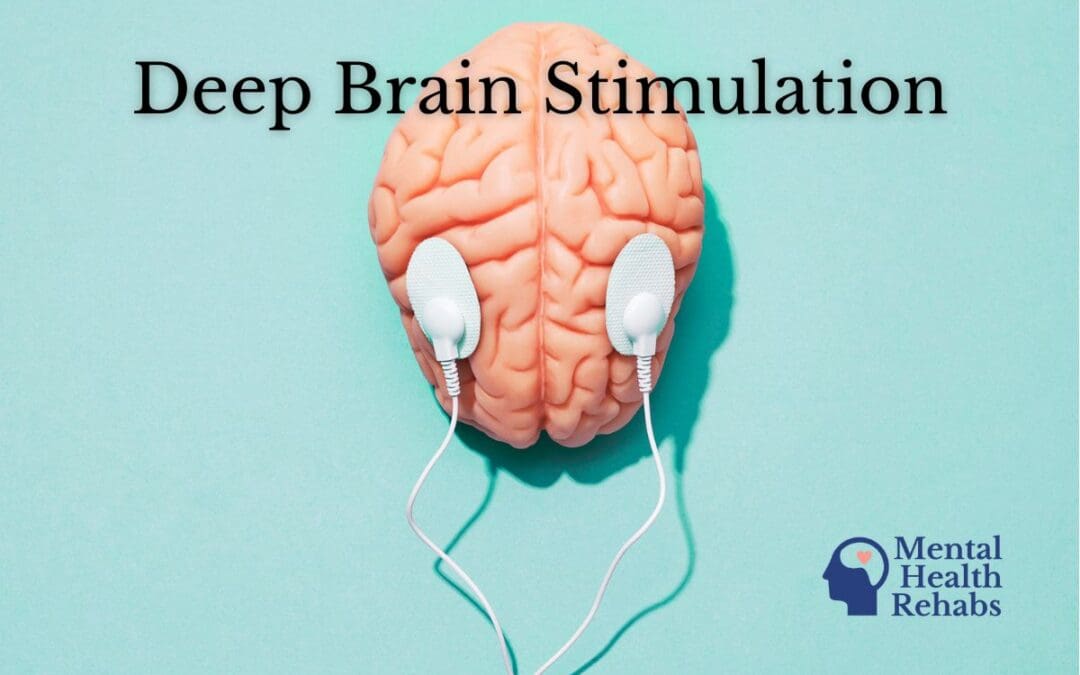What DBS Does, Benefits, How Safe It Is, And Side Effects
Deep brain stimulation (DBS) is a neurosurgical procedure that may benefit patients who suffer from certain neurological disorders and whose symptoms have become immune to medications. This article will introduce DBS, its potential benefits, safety, and potential side effects.
What is deep brain stimulation?
Deep brain stimulation (DBS) is a surgical procedure in which a small device, an “electrode” or “lead,” is placed inside the patient’s skull to produce small electrical discharges. The electrode is placed strategically to electrically stimulate specific areas of the brain that work abnormally, aiming to improve their function.
Surgically placing electrodes inside the skull involves:
- Creating a small opening on the skull to introduce the electrode(s), which are thin, insulated wires that conduct electricity
- Connecting the electrode to an extension wire, which is also insulated. The extension wire passes under the head, neck, and shoulder skin, finally resting on the upper chest
- In the upper chest, it connects with the internal pulse generator (IPG), essentially the battery that powers up the electrode
This sounds invasive and risky, but DBS is a mostly low-risk procedure. The potential benefits include improving the patient’s quality of life and reducing reliance on medication.
Still, a successful DBS procedure requires experienced surgeons and proper patient selection.
Which diseases and disorders does deep brain stimulation treat?
Patients who suffer from various neurological disorders (primarily movement disorders) can potentially benefit from DBS, including the following:
- Parkinson’s disease
- Essential tremor
- Dystonia
- Medication-resistant epilepsy
Patients suffering from psychiatric disorders like depression, obsessive-compulsive disorder (OCD), or Tourette disorder may, in rare cases, benefit from DBS. However, we need more research on DBS’ effectiveness for psychiatric disorders.
How successful and safe is deep brain stimulation?
DBS is widely considered a safe procedure when performed by qualified, experienced neurological surgeons on a patient who has passed extensive screenings and tests.
However, any surgical procedure carries inherent risks and potential risks. Let’s explore the benefits, risks, and possible side effects of DBS.
Benefits of deep brain stimulation (DBS)
- Reduction of uncontrollable tremors that have become medication-resistant
- Improve symptoms for patients who respond well to medication but develop motor symptoms such as muscle spasms when the medications wear off
- Improvement in symptoms for patients who may respond well to higher dosages or frequency but will likely suffer side effects
- Reduction of abnormal postures and uncontrollable twisting movement in patients with dystonia
- 24/7 symptom control
- Electrical stimulation can be adjusted to improve results
- Reduced reliance on medications
- It will not fully fix all symptoms, but it can lead to an overall improvement in quality of life
Risks of deep brain stimulation (DBS)
- It’s potentially risky if the patient suffers from another condition that may increase the chance of complications, such as high blood pressure
- People older than 70 suffer an increased risk of complications
- The procedure carries a 1-3% risk of brain bleeding, which may be insignificant or lead to complications
- Infections
Potential post-surgery side effects of deep brain stimulation (DBS)
- The device may malfunction
- Not all symptoms may improve
- Headaches
- Worse mental or emotional status
- Many patients experience benefits after surgery, but there’s no guarantee for each case
- This may lead to movement disorders such as dyskinesias, blepharospasm, and hypokinesia
Potential side effects during electrical stimulation
- Tingling in the limbs or face
- Muscle pulls
- Vision or speech issues
- Temporary loss of balance
Who qualifies for deep brain stimulation? What are the requirements?
There are multiple reasons why a patient may qualify for deep brain stimulation. They change depending on the specific disease they suffer from. For Parkinson’s disease, for example, stiffness and abnormal walking symptoms may indicate that DBS could be beneficial.
What all symptoms across disorders tend to have in common is that medications are no longer effective in maintaining a good quality of life. The best candidates for DBS meet these criteria:
- Symptoms significantly reduce their quality of life.
- Symptoms don’t respond to medication despite the correct dosage.
- Side effects from the symptoms are physically and mentally intolerable.
Multiple tests will be performed for patients that meet these criteria to determine their suitability for DBS. The tests are used to identify abnormalities and potential risk factors. The tests include urine and blood tests and MRI and CT scans.
Would you benefit from deep brain stimulation?
Only your doctor can determine that. Only qualified and experienced professionals can determine whether someone would benefit from DBS. Before anyone is cleared for DBS, they must go through several sessions with a team consisting of a neurologist, neurosurgeon, neuropsychologist, and psychiatrist.
If your doctor determines that you qualify for DBS, they’ll perform the necessary tests and make the final decision based on the results.

